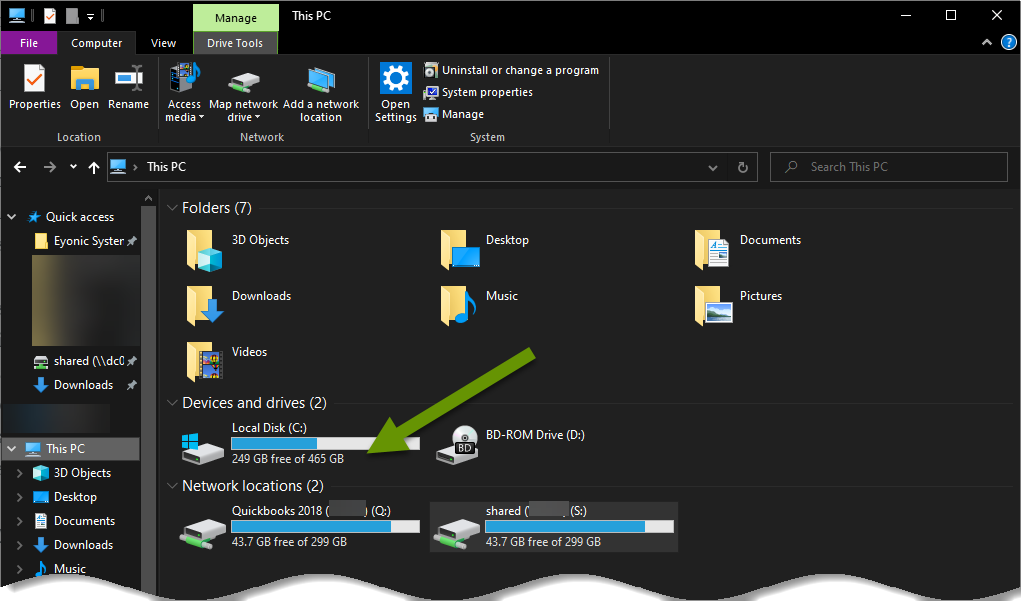The One Thing Windows 10 Will Not Recover From
The more familiar you are with individual computer parts, the less scared you are about breaking the device. This is true of anything really, if you know how each piece works the likelihood you can fix the issue or at least save some time and money is much higher. This knowledge allows you to be more adventurous. Blow a power supply? No problem, spend 15 minutes to swap it out. Have a stick of memory fail? Replace it with a new one in minutes.
Unfortunately, there is one major thing that Windows 10 cannot recover from. Luckily, if you know what to look for, it is completely avoidable.
The One Thing Windows 10 Will Not Recover From
In addition to hardware issues like those listed above, there are also hundreds of types of application issues that can occur on a Windows device. Some examples are:
- Getting a malware infection.
- Software corruption leading to application failure or unexpected behavior.
- Application locking for no apparent reason.
- Unexplained file loss.
- Exaggerated response times, making the application ineffective.
These are vastly different issues to deal with. Some of these issues can be fixed by adding memory to the device, others by swapping an older hard drive for a faster solid state drive, while sometimes a software reinstall works. As you can see, some problems can be fixed quickly while others require a substantially larger time investment.
Fixing a device that suffers this fate requires a rebuild from scratch. Rebuilding from scratch is not particularly difficult, but it is tedious. Reinstalling the operating system is just the beginning - there is so much more than that to be done!
Some of the additional steps often include:
- Reinstalling the software applications installed over the life of the device. This requires having the software installer, as well as the applicable license and product keys. The older the software the more likely it is that multiple updates will also need to be installed.
- Configuring system preferences. These are things like connecting to the network for internet access, default file saving locations, screen resolution, power settings, Windows update settings, setting defaults for peripheral hardware devices like printers, and more.
- Configuring application preferences. This includes configuring web browser defaults, managing desktop, toolbar and start menu shortcuts, connecting accounts like email, application passwords, setting default applications for specific file types, connecting backup files to programs like QuickBooks, and more.
The list above is not exhaustive, but you get the idea of the amount of work it takes. Keep in mind, this assumes you have an in-place data backup solution with a recent copy of your data. The amount of time it takes to do all the steps above is why we always recommend that people invest in a device that will last longer, rather than something that is really cheap but will need to be replaced within a few years. The setup and transfer process often isn't worth doing every few years to save a few dollars now.
These issues aside, any device can suffer a failure, whether you are using a brand new device with the latest and greatest hardware or a seven-year-old device you purchased used. If you let a device run out of storage space while in the middle of installing Windows updates, the device will almost undoubtedly suffer a catastrophic failure that is not recoverable.
This happens because updates get partially installed, system files and other critical files are being changed, but the process is interrupted before it is able to finish. Picture partially taking an engine apart. Even if all the parts are still technically "under the hood", if they are not where they need to be when you try starting the car, it will fail to start. When items necessary for a successful start are not available, such as during Windows updates or car repairs, the process fails.
So, how can you prevent this from happening? The answer is simple - watch your storage space! To check the storage use of your Windows device, click the search bar next to the start button and type: "This PC". Click on the app that appears in the search results. In the "This PC" window, check to see how much storage is available on local drive. While there are often multiple drives, such as in the example image below, the C: drive is almost always the drive you need to check.

While you normally do not need lots of space for updates, you certainly do not want to risk running out. It should be okay to run updates if you have a minimum of 15GB of storage available before running updates. Also, a drive's response time will begin to slow as it approaches capacity. This happens for both older hard drives, as well as newer solid state drives (when writing files but not when reading files), in slightly different ways based on the varying technologies used.
The best way to prevent your device from crashing into an unrecoverable state while installing Windows updates, is to periodically check the storage usage. Check usage every quarter, or if you know you have been doing a lot more file downloading or creation, check it monthly. This is one of those issues that is absolutely preventable, requires only a minute to prevent, but often goes overlooked.
As always, taking a few minutes of your time to prevent a failure that would cost you days to recover from is absolutely worth it!

